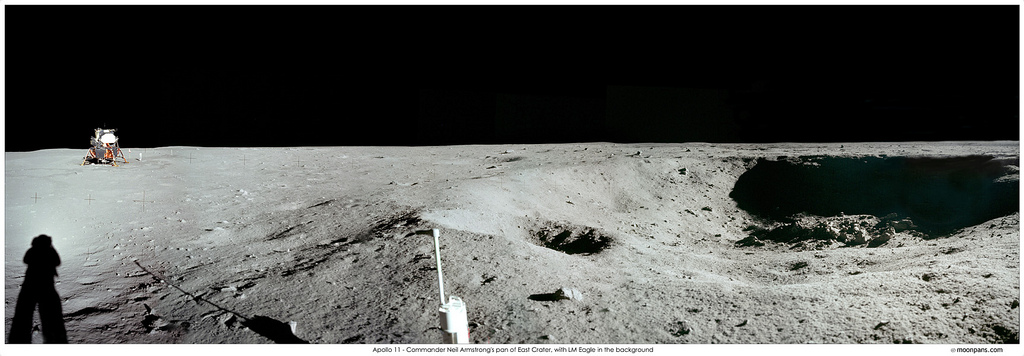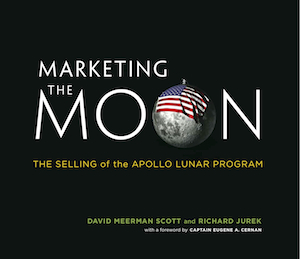CBS News, with Walter Cronkite at the helm, billed their live coverage of the Apollo 11 launch as, “Man on the Moon: The Epic Journey of Apollo 11.”
Epic. Journey.
One small step. One giant leap.
This wasn’t American history, it was world history.
The Apollo lunar program had all the elements of an epic story:
- Heroes: The Astronauts
- A Promised Land: The Moon
- A Champion: John F. Kennedy
- A Campaign: The Apollo Lunar Program
- An Ultimate Sacrifice: Loss of life
- A Worthy Adversary: The Soviet Union
If you study the story of NASA during the Apollo era, you know it all began with a singular goal set by President John F. Kennedy in an announcement before a special joint session of Congress on May 25, 1961:
- Land a man on the moon
- Return him safely to earth
- And do this by the end of the decade
To accomplish this, NASA organized teams of rocket scientists, engineers, physicists, chemists, mathematicians, medical professionals, test pilots and others to focus on three core disciplines:
- Life preservation — keeping astronauts alive and safe
- Propulsion — breaking free of gravity
- Navigation — synching an array of moving objects (earth, moon & spacecraft) in real-time
But there was actually a fourth discipline NASA had to master: Storytelling.
And that story has not been adequately told. Until now.
A new book, Marketing the Moon: The Selling of the Apollo Lunar Program by David Meerman Scott and Richard Jurek, tells the story of NASA’s storytellers — how a handful of men fought to allow public access to and participation in this historic era of space exploration.
Could you imagine the moon landing being written as a press release? Think about how powerful it was (and is) to watch that grainy footage of Neil Armstrong descending the ladder of the Apollo 11 Lunar Module to stand on the moon’s surface. Think about how powerful it was (and is) to hear him say those historic words.
The best stories are shared stories.
Here are six lessons I’ve learned about storytelling from the Apollo lunar program. I hope they inspire you to live stories bigger than you and your organization — stories in which others want to participate as associates, partners, investors, clients and suppliers.
1. It Takes a Team.
Do the names Walter Bonney, Julien Scheer, Jack King or Walter Shafer ring a bell? These guys brought you and I the photos, film footage, interviews, world tours, memorabilia and news stories that allowed us access to the astronauts and space program.
NASA’s storytelling team included experienced journalists, broadcast producers, photographers, event coordinators and public relations professionals curating and crafting stories to create and fulfill public demand.
Who is your storytelling team? Do you even have one? Who are the best storytellers in your industry? Why haven’t you hired them or contracted with them yet?
2. It Takes Time.
It took 57 years, three months and 26 days to get from the Wright brothers first controlled flight to President Kennedy’s man on the moon speech. It took another eight years, one month and 26 days to get from Kennedy’s announcement to Neil Armstrong’s first step on the moon.
We live in a now culture. Real-time marketing and customer service are hot topics. Why not let your competition chase the day’s fads, while you work a disciplined plan to lay out an epic story no competitor will be able to steal or mimic?
And, by the way, that story isn’t the one about you. It’s the one about your client landing on their moon (using your product or service).
3. It Takes Practice.
Stories are messy. Especially the best ones.
They go through rough drafts. Edits. Re-writes. And they do all this publicly. But that’s what attracts others interest and participation.
The Apollo lunar program, including what was a nascent Public Information Office (PIO) at that time, embodied the pioneer spirit. They explored new ideas and experimented with ways of bringing the public inside NASA’s story.
Is your story evolving? Has it hit some blocks? Are you deliberately practicing it right now? Publicly?
4. It Takes Courage.
Telling stories that have never been told means doing things that have never been done.
And doing things that have never been done means taking risks. Which means people are going to get hurt. Including you.
Julien Sheer, NASA’s public affairs chief, and his team fought years of resistance from scientists, technicians and aviators to get a television camera on the spacecraft. And his role as a change agent eventually lead to him being replaced after a key ally, James Webb, left NASA.
Are you willing to risk failure and humiliation for your company or cause? Are you willing to risk your job?
If not, you’re story probably isn’t big enough yet.
5. It Takes Sharing.
For a story to spread, it must be shared. But sharing means two things.
First, it means telling it. Sharing it with others. That’s precisely what NASA’s storytellers did. And do to this day.
Second, and more important, it means that others share in it. They make your story their story. They adopt and adapt it.
Forty-four years have passed between Apollo 11’s historic moonshot and the publication of Marketing the Moon. Those stories curated and shared by a team of storytellers nearly a half century ago have become the story Scott and Jurek are sharing today.
Are you sharing a story others will make their own? If not, why not?
6. It Takes Selling.
That’s the core narrative in Marketing the Moon — storytelling had to be marketed and sold inside NASA.
If sales is about convincing others to do something, marketing is about creating experiences in which others convince themselves.
It takes both to sell an organization’s story. It also takes persistence, patience and, sometimes, power plays.
Big Stories Ask Big Questions
Ultimately, the Apollo lunar program — like any epic story — helped us ask timeless questions:
- Why are we here?
- What’s out there?
I’d like to think we’re here to explore what’s out there. And “out there” means anything we’ve yet to know, experience or understand.
Mount Everest may be earth’s ultimate summit, but the moon has been humanity’s ultimate quest. At least, as of this writing.
And that tees up the core question I would like to pose in this article: Are we still shooting for moons? As human beings? As causes? As organizations?
Why go to the moon? What’s the point? When asked this, Kennedy said:
We choose to go to the moon in this decade and do the other things, not because they are easy, but because they are hard; because that goal will serve to organize and measure the best of our energies and skills…”
In a world in which marketing is believed by many business leaders to be persistent self-promotion, this terrific book reminds us, through the story of the Apollo program’s storytellers, that marketing is about public information — stories — not publicity.
In his forward to Marketing the Moon, Captain Eugene A. Cernan, USN (ret.) writes:
You must share your ideas with (the public) — not talk at them — if you want to achieve your ultimate goal.”
If only today’s leaders would get this.
Thank you, David and Richard, for a beautifully packaged, brilliantly told story. It’s one I’m more than happy to join.
Click here to visit the site for this book.
UPDATE: National Public Radio featured David and Richard in a Marketplace segment. And Bruce Dorminey featured the book in a Forbes interview.

